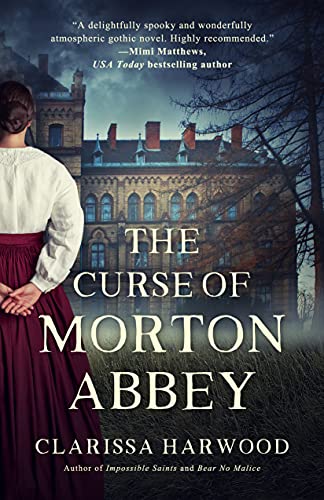The Curse of Morton Abbey
Vaughan Springthorpe journeys to Morton Abbey to collect and prepare papers that will allow Sir Peter Spencer to sell his family’s residence and grounds. Though well-trained by her father, Vaughan keeps her gender, as well as the birth defect that compromises her ability to walk, secret in her correspondence with Sir Peter. 1897 England is not a time nor a place for young women to seek independence and a professional career as a solicitor.
She is met at Morton Abbey by Sir Peter’s ailing younger brother Nicholas, who is doing his best to thwart the sale of the property, and attractive gardener Joe Dixon, who lives with his mother and brother in nearby Netherton.
Vaughan soon learns why other solicitors have abandoned the job and the Abbey—keening sounds in the night, a child’s jacks and marbles left in front of the door to her room or on the stairway, books repeatedly pulled from shelves and scattered helter-skelter in the library. She also learns of the tragic deaths of two young girls—Nicholas’s daughter Frances, and Joe’s sister Dora—and notes the absence of other young girls in Netherton.
The Curse of Morton Abbey is reminiscent of Charlotte Brontë’s Jane Eyre with its moody and enigmatic Nicholas and strange nightly happenings amid the societal backdrop of the times. But while the plot seems familiar, there are enough surprises along the way to keep readers guessing and wanting to follow the feisty, headstrong Vaughan as she uncovers the truth underlying the mystery and navigates life on her own terms.










